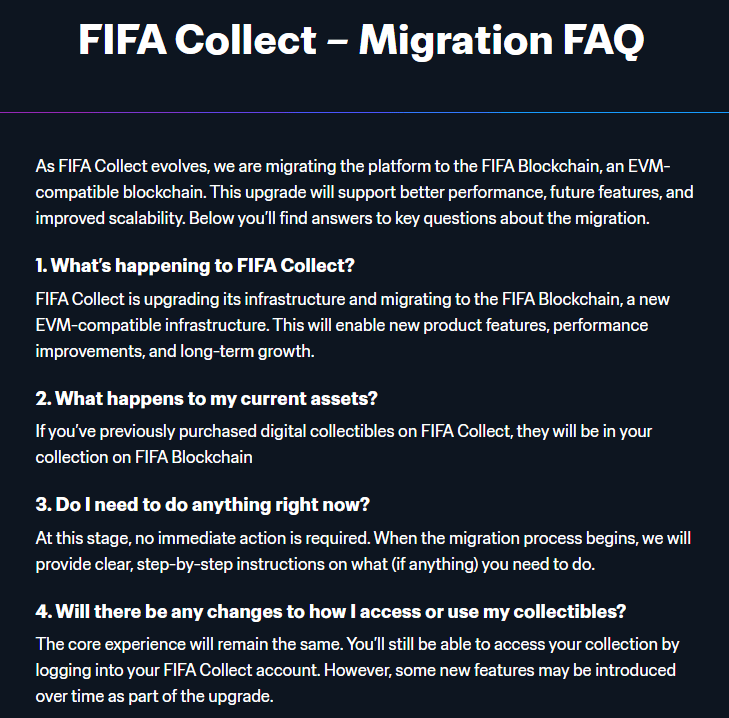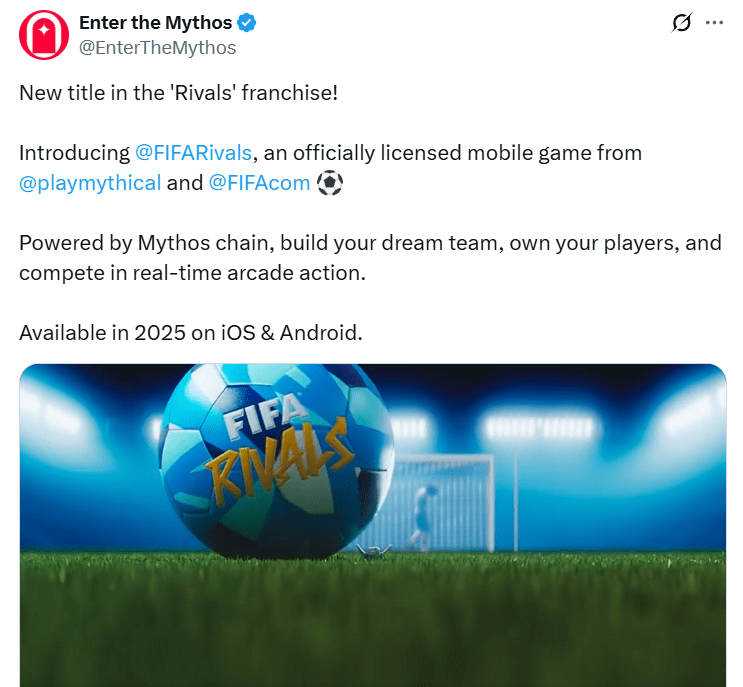The Federation Internationale de Football Association (FIFA) is making a significant move in the blockchain space by launching a new blockchain network tailored for its non-fungible token (NFT) collectibles. Announced on April 30, this initiative signals FIFA’s growing commitment to Web3 technologies and enhancing fan engagement through digital assets.
What is the FIFA Blockchain?
The new blockchain, dubbed “FIFA Blockchain,” is designed with Ethereum Virtual Machine (EVM) compatibility. This compatibility is crucial as it allows seamless integration with the vast Ethereum ecosystem, benefiting from its established infrastructure, developer tools, and a wide range of decentralized applications (dApps).
Key Benefits of the FIFA Blockchain
- Improved Performance: The new blockchain promises faster transaction speeds and lower latency, crucial for a smooth user experience when interacting with NFTs.
- Future Features: The architecture is designed to accommodate future innovations and features, ensuring the FIFA NFT platform remains cutting-edge.
- Enhanced Scalability: The FIFA Blockchain aims to handle a large volume of transactions efficiently, which is essential for supporting a global fanbase and a growing collection of digital assets.
Migration of FIFA Collect
As part of this transition, FIFA Collect, the organization’s official NFT collection, will be migrated from the Algorand blockchain to the new FIFA Blockchain. The migration is scheduled to begin no earlier than May 20. This move is intended to provide users with a more robust and feature-rich platform for their digital collectibles.

What Users Need to Know About the Migration
- No Immediate Action Required: FIFA has assured users that no immediate action is needed. Detailed instructions will be provided closer to the migration date.
- Migration Timeline: The migration will occur no earlier than May 20. FIFA will confirm the exact date and provide clear, step-by-step guidance for NFT holders.
- Wallet Compatibility: After the migration, external Algorand-based wallets such as Pera and Defly will no longer be supported. Instead, users will need to connect via MetaMask or other EVM-compatible wallets that support WalletConnect. This shift aligns the platform with the broader Ethereum ecosystem and offers greater flexibility for users.
- Automatic Listing: Existing collectibles will be automatically listed on the new platform unless users choose to delist them before the migration date.
FIFA’s Growing Interest in NFTs and Web3 Gaming
FIFA’s foray into the blockchain world extends beyond NFT collectibles. The organization has been actively exploring opportunities in Web3 gaming, signaling a broader strategy to engage with fans through digital experiences.
In November 2024, FIFA partnered with blockchain gaming studio Mythical Games to launch FIFA Rivals, a free-to-play soccer game available on iOS and Android. This game allows players to manage their own football clubs and compete against others in real-time, leveraging blockchain technology to offer unique ownership and trading opportunities for in-game assets.

The Future of FIFA Rivals
The full version of FIFA Rivals is scheduled to be released in the summer of 2025. John Linden, CEO of Mythical Games, anticipates that FIFA Rivals could attract over 100 million gamers. The game’s predecessor, NFL Rivals, has already garnered over 6 million players, indicating a strong appetite for blockchain-based sports games.
Implications for the NFT Market
FIFA’s move to launch its own Ethereum-compatible blockchain has several implications for the NFT market:
- Mainstream Adoption: FIFA’s involvement brings significant credibility and exposure to the NFT space, potentially attracting a wider audience of sports fans and collectors.
- Enhanced User Experience: The new blockchain aims to provide a smoother and more feature-rich experience for NFT holders, addressing some of the challenges associated with earlier blockchain platforms.
- Innovation in Digital Collectibles: FIFA’s commitment to future features suggests that the platform will continue to evolve, offering new and innovative ways for fans to engage with digital assets.
Conclusion
FIFA’s decision to migrate its NFT platform to a new Ethereum-compatible blockchain underscores the growing importance of blockchain technology in sports and entertainment. By prioritizing performance, scalability, and future features, FIFA is positioning itself at the forefront of the Web3 revolution, offering fans new and exciting ways to connect with the sport they love. The launch of FIFA Blockchain and the migration of FIFA Collect mark a significant step forward in the evolution of digital collectibles and Web3 gaming within the sports industry.